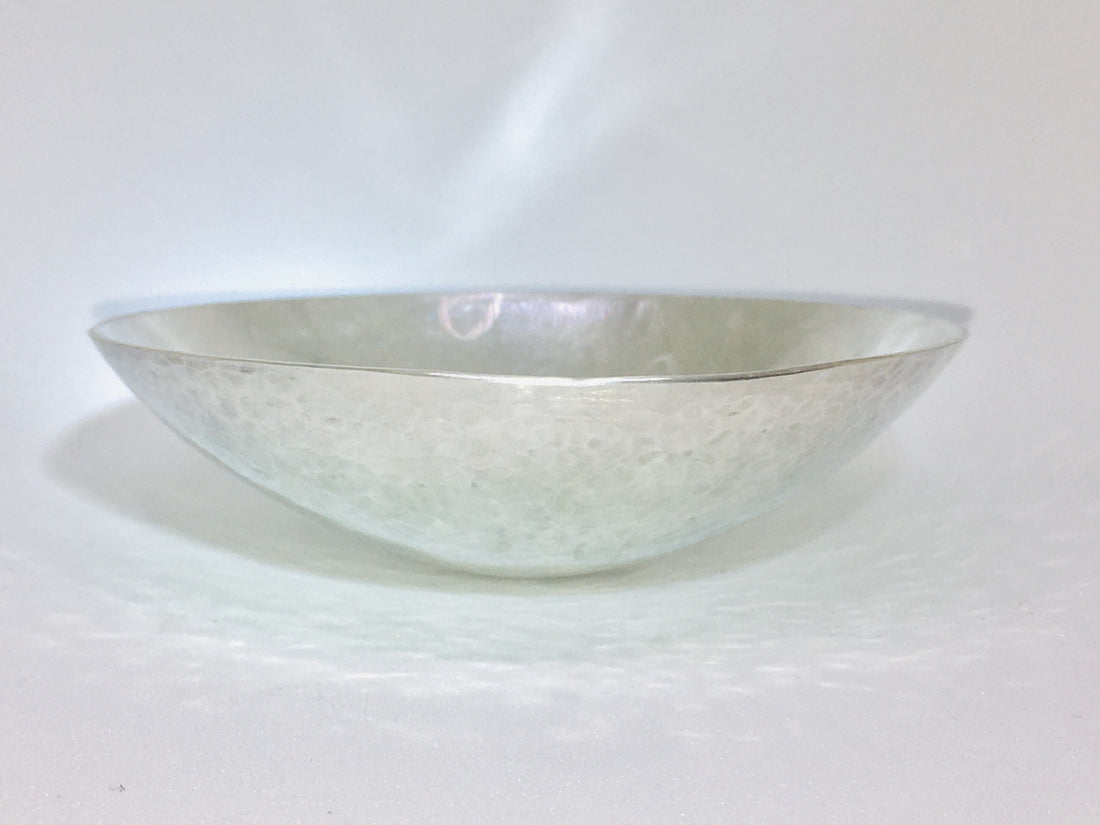
What is Silversmithing?
Share
Silversmithing is the craft of creating objects from silver. It involves bending and shaping pieces of silver into various objects. Artists that do silversmithing are know as Silversmiths.
Silversmiths create a wide range of objects, including jewellery, tableware, and decorative objects such as vases, sculptures, and utensils.
The art of silversmithing has a long history, dating back thousands of years, and it continues to be practiced by artisans like myself, around the world.
From intricate jewellery pieces to functional household items, the art of silversmithing encompasses a wide range of techniques and styles.
In this blog, we delve into the fascinating world of silversmithing, exploring its origins, techniques, and enduring appeal.
Table of Contents
1. What are the Origins of Silversmithing?
The art of working with silver traces its origins back thousands of years, with evidence of silver artefacts dating as far back as ancient civilisations such as Mesopotamia, Egypt, and Greece. Initially prized for its rarity and beauty, silver quickly became a favoured medium for crafting both decorative and functional objects.
Silversmithing can also be found during the Middle Ages, as guilds formed and specialised artisans honed their skills in working with silver. These skilled craftsmen were responsible for creating a myriad of objects, including jewellery, tableware, religious artefacts, and decorative items for nobility and wealthy patrons.
In the below video, watch how I start to make a bowl made out of silver sheet. I use some of the below techniques that I discuss in this blog. Subscribe to my Youtube channel
2. What Techniques are used in Silversmithing?
Silversmithing encompasses a diverse array of techniques, each requiring precision, skill, and creativity. Some of the primary techniques employed by silversmiths include:
1. Hammering: The process of shaping silver by hammering or pressing it into desired forms. This technique allows artisans to create both delicate and robust structures, ranging from intricate filigree designs to sturdy utensils.
2. Soldering: A method used to join pieces of silver together using a filler metal, known as solder. Silversmiths carefully heat the metal to its melting point, allowing the solder to flow between the joints and create a strong bond without compromising the integrity of the silver.
3. Repoussé and Chasing: These techniques involve manipulating the surface of the silver from the reverse side to create intricate designs and reliefs. Repoussé involves shaping the metal by hammering it from the back, while chasing is the process of refining and detailing the design from the front.
4. Casting: The process of pouring molten silver into a mold to create three-dimensional objects. This technique allows for the production of complex shapes and designs, making it ideal for creating decorative elements and sculptural pieces.
5. Engraving and Embossing: These techniques involve carving or etching designs onto the surface of the silver. Engraving utilises sharp tools to cut into the metal, while embossing involves raising the design from the surface through controlled pressure.
6. Polishing: This technique involves bring out the shine or gloss of the metal, so that it becomes a reflective surface. The process involves rubbing the metal with abrasive materials such as polishing compounds, cloths, or brushes, gradually smoothing out imperfections and scratches.
3. Is Silversmithing Creative?
One of the most exciting aspects of silversmithing is its capacity for creative expression. Whether crafting delicate filigree earrings or sculptural vessels, artisans infuse their designs with personal style and artistic vision. Inspiration can be drawn from nature, history, and cultural motifs, silversmiths create pieces that resonate with beauty, symbolism, and meaning. Collaboration between silversmiths and other artisans, such as jewellers, designers, and sculptors, contribute to the diverse and evolving landscape of contemporary silver artistry.
4. What types of products do Silversmiths produce?
Silversmithing encompasses a broad spectrum of applications, with jewellery one of the more prominent domains. Silversmith jewellers craft rings, necklaces, bracelets, and brooches adorned with gemstones and intricate detailing.
Traditional silversmiths were known to produce objects, rather than jewellery, such as tableware and serving pieces, including cutlery, tea sets, and trays, which showcase the marriage of form and function in silver design. Sculptural works and decorative accents, such as vases, candlesticks, and sculptures, were made to enrich living spaces and homes, with their elegance and craftsmanship.
5. Is Silversmithing still relevant today?
In todays age, the mark of mass production and disposable consumerism, silversmithing stands as a testament to artisanal excellence and craftsmanship. While industrialisation has transformed the landscape of silver production, there remains a steadfast appreciation for handcrafted silverware and jewellery.
The continued interest in sustainable and ethically sourced materials has prompted a renewed appreciation for value of silver and the artistry of silversmiths.
6. Conclusion:
Silversmithing has a very rich history, uses diverse techniques and continues to inspire and enchant creatives and patrons alike around the globe. Whether preserving age-old traditions or pushing the boundaries of innovation, silversmiths imbue their creations with passion, skill, and artistry.
More Blogs by Rahaima
- Cubic Zirconia Vs Lab Grown Diamonds by Rahaima
- What is 925 Sterling Silver? By Rahaima
- What is Brass Made From? By Rahaima
- Top 3 Tips for Cleaning Silver By Rahaima